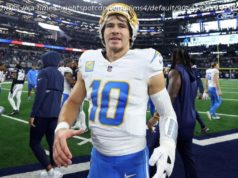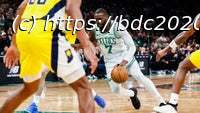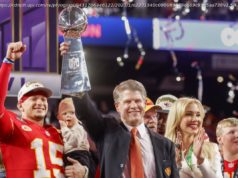The NBA sent a memo to its teams Friday night reinforcing how the league expects players to act during the anthem.
Talk about burying the lede.
If you scroll down a bit on the NBA’s latest memo about national anthem protests – the one that was sent to general managers and team presidents on Friday under the subject line, “Next Steps: Building Stronger, Safer Communities” – the part that matters most starts at the 359th word. Underneath all those suggestions on how to spark positive change without taking a knee, in this message that came just one day after commissioner Adam Silver shared similar sentiments at a Board of Governor’s meeting in New York, it’s that 13th paragraph which hits you like a hard pick.
The most progressive sports league of them all, it’s quite clear, is navigating some tricky waters as the season nears.
“These are difficult and nuanced issues,” deputy commissioner Mark Tatum wrote. “We support and encourage players to express their views on matters that are important to them.”
Then one line later…
“The NBA has a rule that players, coaches and trainers stand respectfully for the anthem,” Tatum continues. “The league office will determine how to deal with any possible instance in which a player, coach or trainer does not stand for the anthem. (Teams do not have the discretion to waive this rule).”
Yet with the anthem watch set to begin with two preseason games on Saturday night, and with so many NFL players having set a strong new standard on this front while their embattled commissioner, Roger Goodell, surprised many by supporting their cause, here’s the problem with the NBA’s position: Players who are fed up with racial inequality, or who want to send a message of disapproval to President Trump as a response to his divisive ways, aren’t truly free to be heard so long as this rule is being held over their heads.
For all the value that comes with “Community Conversations” or “Building Bridges Through Basketball” programs and the like, it’s the kneeling that has forced the uncomfortable conversations about racial inequality at America’s kitchen table lately. As San Antonio Spurs coach Gregg Popovich said last week, it’s those tough talks that often help us grow as a nation – no matter the impact on the bottom line.
The rule itself, which was instituted before Silver entered the league 25 years ago, is causing the quandary here (the NFL, for the record, has no such rule). Had Silver decided on Thursday to take the reformist route, abolishing the rule which states that players should “stand in a dignified posture” for the anthem, then an immense pressure would have grown for the NBA masses – and especially African-American players – to take a knee.
It’s a nuanced notion that shouldn’t be discounted.
There are plenty of players who would rather do their part in ways that don’t involve the flag, either because of the potential for blowback or because of personal beliefs. For some, as the league is well aware, it’s the kind of damned-if-you-do-damned-if-you-don’t decision that weighs heavier on the people making it than any of us who haven’t been in their shoes can ever imagine. What’s more, team officials the league over were looking for guidance on how to handle the issue – thus, Silver’s speech and the memo.
So Silver tried to split the screen on Thursday, acknowledging the importance of the player voice while also highlighting the reality of the rule’s existence. Tatum’s note, which can be read in full below, was an attempt to provide teams with detailed structure and guidance – up until that unlucky 13th paragraph where the message came off as controlling.
Latest:
But there’s a body of work here that can’t be forgotten. This is the same commissioner who handed former Los Angeles Clippers owner Donald Sterling a lifetime ban in April 2014 after his racist views were exposed by TMZ.
This is the same commissioner who has always earned respect from the game’s biggest stars, forging real relationships with players like LeBron James, Steph Curry, Chris Paul and so many others. This is the same commissioner who moved the 2017 All-Star game out of Charlotte because of its discriminatory LGBT laws, and who chose not to fine players for the dress code violation in 2014 when they wore “I Can’t Breathe” shirts as a way of honoring Eric Garner.
A tone-deaf tyrant, he is not.
As my colleague, Jeff Zillgitt, wrote, the smart money says that Silver won’t fine players if they do take a knee. If he does, then the goodwill built up with players over these past four years will be gone like John Wall on the break.
To that end, National Basketball Players Association executive director Michele Roberts told The New York Times on Friday that “To borrow Silver’s words: If discipline is imposed on a player, we too will deal with it.”
If a fine doesn’t come, then the conversation about whether the rule should remain should unofficially begin. In these black and white times, only time will tell if the NBA can find its way through the gray.
—
RE: NEXT STEPS: BUILDING STRONGER, SAFER COMMUNITIES
As a follow-up to our discussions at this week’s Board of Governors meetings, this document outlines suggested steps each team could take as we prepare for the start of the season and continue to develop impactful community programs.
I. ENGAGING PLAYERS AND SENIOR LEADERSHIP
If you have not done so already, we suggest organizing discussions between players, coaches, general managers and ownership to hear the players’ perspectives.
One approach would be for team leadership to review existing team and league initiatives and encourage players to share their thoughts and ideas about them. Following those conversations, teams could develop plans prior to the start of the regular season for initiatives that players and senior leadership could participate in, such as:
* Hosting Community Conversations with youth, parents, community leaders and law enforcement about the challenges we face and our shared responsibility to create positive change.
* Creating “Building Bridges Through Basketball” programs that use the game of basketball to bring people together and deepen important bonds of trust and respect between young people, mentors, community leaders, law enforcement and other first responders.
* Highlighting the importance of mentoring with the goal of adding 50,000 new mentors to support young people through our PSA campaign.
* Engaging thought leaders and partners. A variety of experts, speakers and partner organizations are available to players and teams as you continue these conversations and develop programming.
* Establishing new and/or enhancing ongoing team initiatives and partnerships in the areas of criminal justice reform, economic empowerment and civic engagement.






